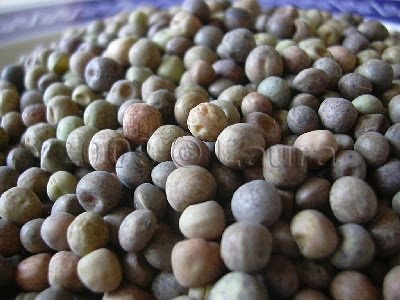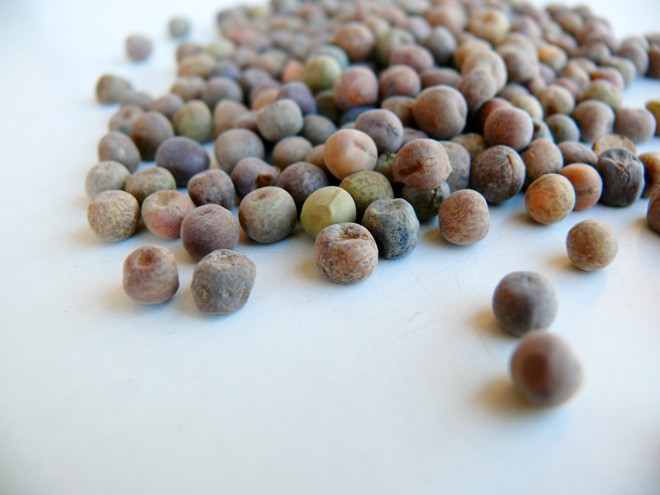
Roveja
This post is also available in:
 Italiano (Italian)
Italiano (Italian)
Roveja, also called “roveglia”, “rubiglio”, “pea of the fields” or “corbello”, is a small legume similar to peas, with seeds ranging from dark green to brown and grey. It has been cultivated for centuries on the Sibillini Mountains where it was part of the farmers’ basic diet.
Almost disappeared from the local tables, it was recovered thanks to a recent Slow Food Presidium recognition. Tasty and nutritious, it is excellent with soups, croutons or to prepare the local “farecchiata”: a kind of polenta with anchovies. Roveja also grows spontaneously along the slopes and in the meadows, but in past centuries it was mainly eaten by the shepherds on the Sibillini Mountains and by the local farmers, together with other simple legumes such as lentils, Indian peas, and broad beans.
As it has always grown wild, some researchers claim that it may be a precursor of the common pea. According to other research, it is an original species (Pisum arvense), quite different peas (Pisum sativum). Having disappeared from local memory, in 1993, three ounces of its seeds were found in a cellar of an old village which was later abandoned after the 1979 earthquake. Thanks to the memory of the elders, the centuries-old memory of Roveja re-emerged. Only a few small crops have survived in Nerina Valley: in a place called Preci, near Cascia, roveja is sown in March at an altitude between 1.968 and 3.937 ft; it is then harvested between the end of July and the beginning of August. The beating process is similar to that of lentils: when half of the leaves have turned yellow and the seeds have become waxy, the stems are cut off and left to dry on the lawn.
Roveja can be eaten fresh or dried, as an ingredient for soups. Stone-ground, it turns into flour with a slight bitter aftertaste, used to make “farecchiata” or “pesata”: a polenta traditionally dressed with a mixture of anchovies, garlic and extra virgin olive oil, which can be enjoyed later on, sliced and toasted in a pan.
This post is also available in:
 Italiano (Italian)
Italiano (Italian)
Contatti



